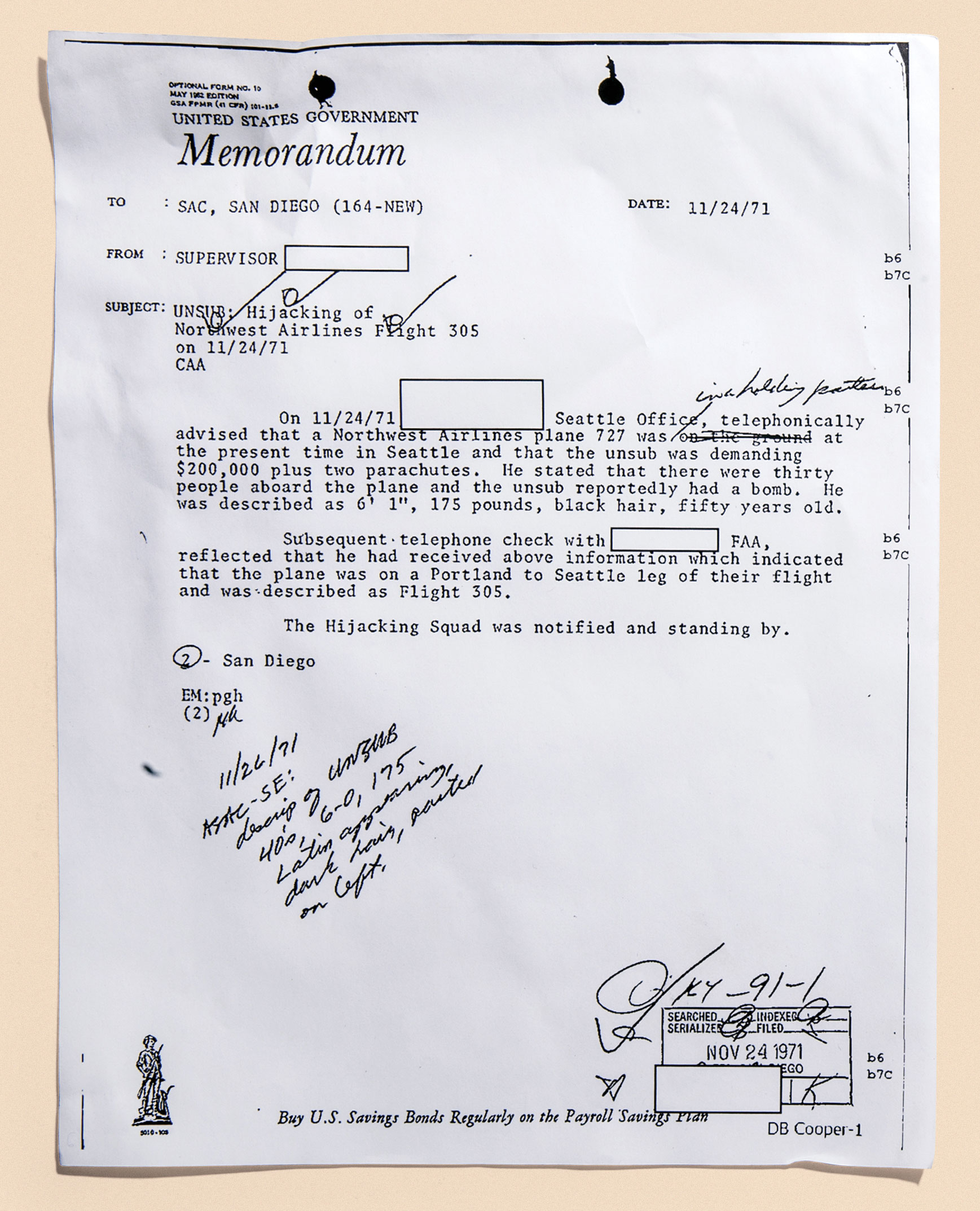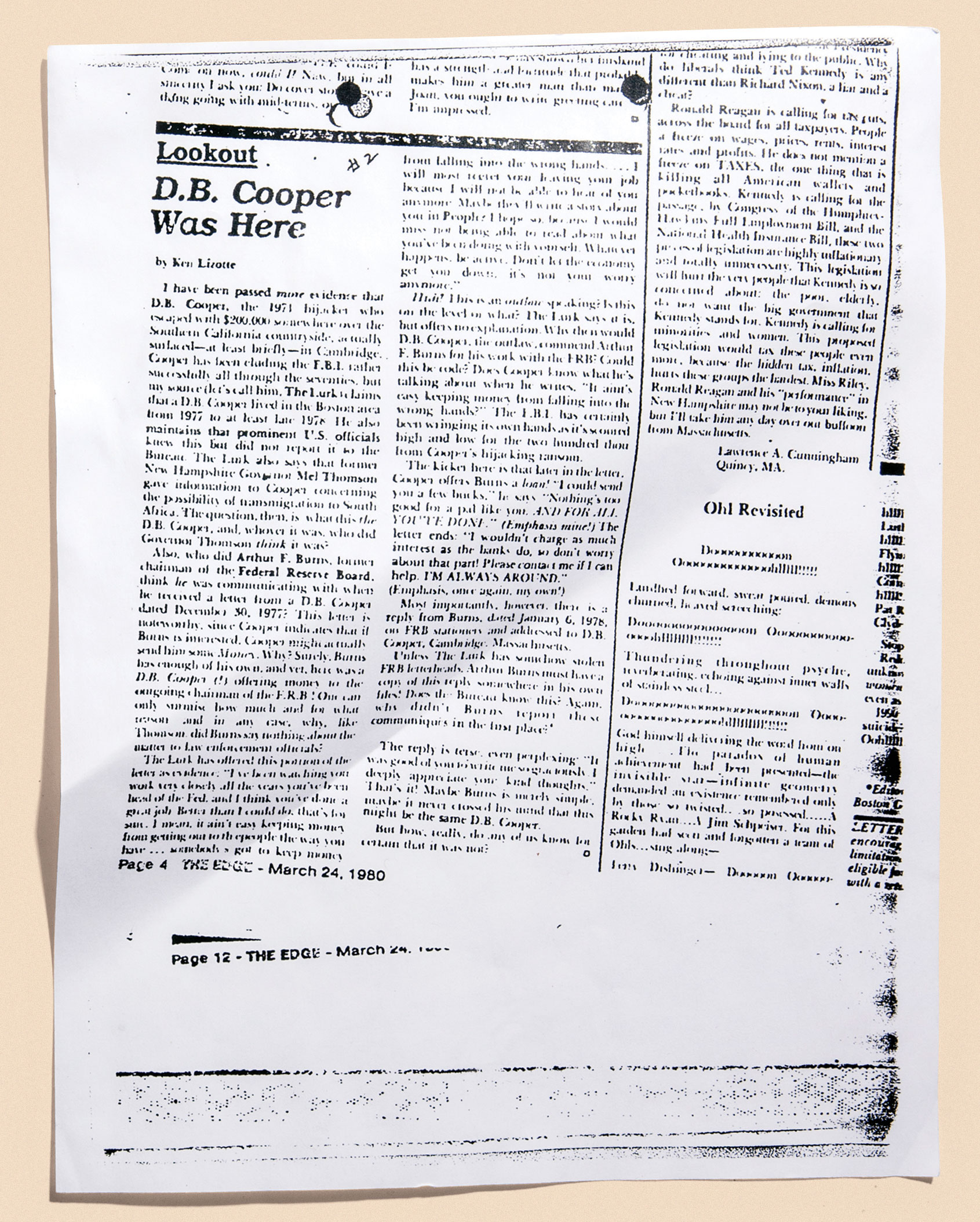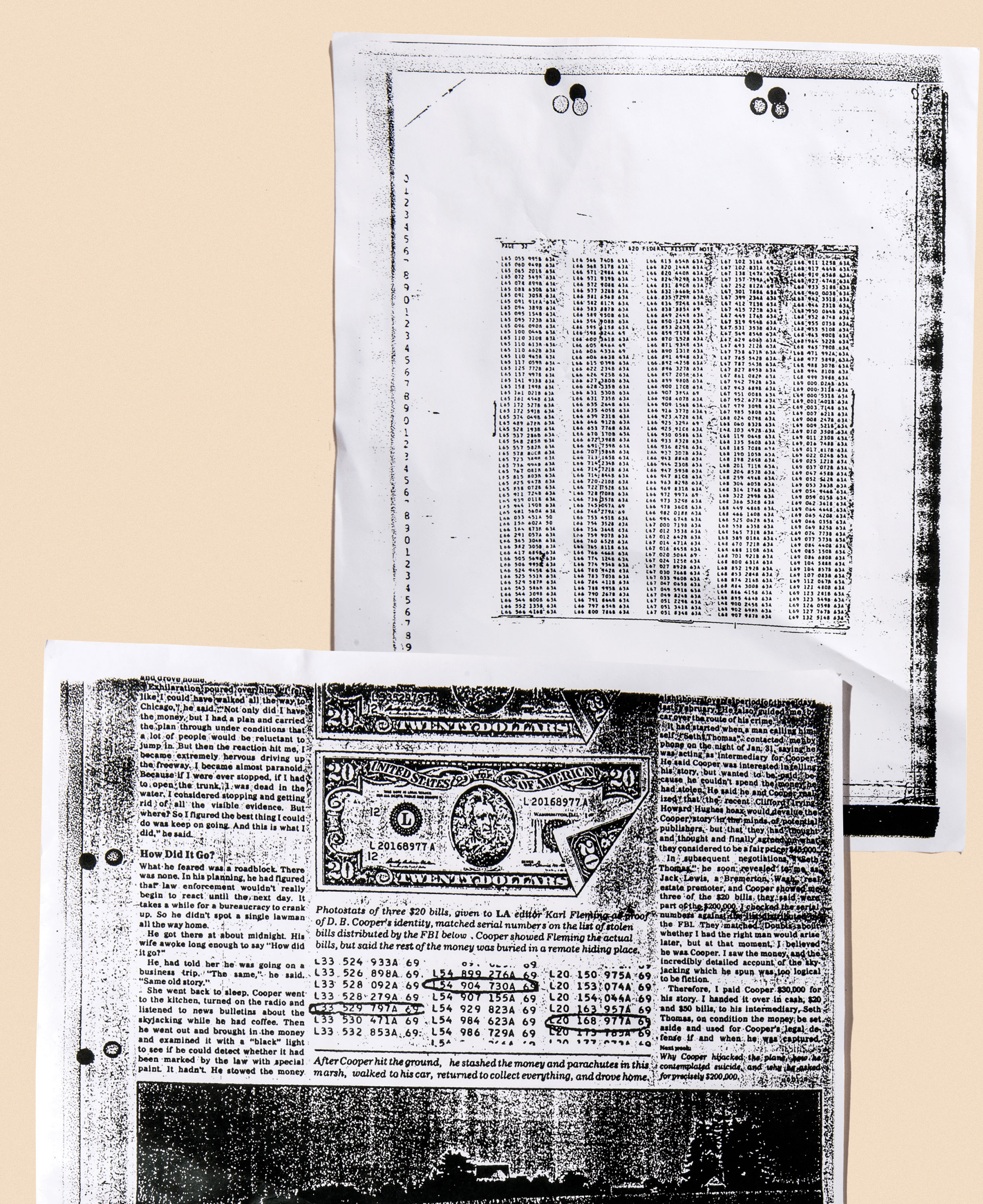This story appears in the March issue of VICE magazine. Click HERE to subscribe.
Last July, the FBI announced that it was closing the books on one of its most infamous unsolved investigations: the disappearance of D.B. Cooper, who, according to legend, jumped out of a plane somewhere in the Pacific Northwest with $200,000 in ransom money strapped to his body and then disappeared.
Videos by VICE
According to the FBI’s case summary, “on the afternoon of November 24, 1971, a nondescript man calling himself Dan Cooper approached the counter of Northwest Orient Airlines in Portland, Oregon. He used cash to buy a one-way ticket on Flight #305, bound for Seattle, Washington.
“Cooper was a quiet man who appeared to be in his mid-40s, wearing a business suit with a black tie and white shirt. He ordered a drink—bourbon and soda—while the flight was waiting to take off. A short time after 3:00 PM, he handed the stewardess a note indicating that he had a bomb in his briefcase and wanted her to sit with him,” the FBI case summary states. “The stunned stewardess did as she was told. Opening a cheap attaché case, Cooper showed her a glimpse of a mass of wires and red colored sticks and demanded that she write down what he told her. Soon, she was walking a new note to the captain of the plane that demanded four parachutes and $200,000 in twenty-dollar bills.”
The end of the bureau’s 45-year probe into Cooper’s disappearance meant that the case files became subject to release under the Freedom of Information Act (FOIA). So, we promptly filed a FOIA request with the FBI seeking the investigative records on Cooper. On January 30, the FBI notified us that it had posted the documents on its online records vault, which it does if three or more people have requested the same records. The agency processed these documents especially quickly after a DC based attorney named Mark Zaid sued for their release last summer.
When it closed the case, the FBI said it was ending “one of the longest and most exhaustive investigations” in its history so it could “focus on other investigative priorities.” Over the years, dozens of amateur sleuths have attempted to solve the mystery of Cooper’s disappearance, which the agency dubbed NORJAK, for Northwest hijacking. But the only clues that ever surfaced were part of Cooper’s parachute, his tie, and about $5,800 in $20 bills that matched the serial numbers of the ransom money, which a young boy found in 1980. It’s still unknown whether Cooper survived.
These files, just 393 pages, represent the FBI’s first interim release of what is believed to be a cache of tens of thousands of pages that it amassed over the past four and a half decades. The files include the first FBI memorandum, never before released, about the hijacking just hours after it occurred.

1. This was a memo sent to the FBI special agent in charge in San Diego on the day of the hijacking alerting the person that an UNSUB (unknown subject) had a bomb and demanded $200,000. “164-New” is an FBI classification code that means “crime aboard aircraft.”
About 200 pages of additional documents are heavily redacted and show how the FBI tried to figure out the identity of the hijacker. The rest of the documents the FBI released are mostly news clippings about Cooper’s disappearance. It may seem uninteresting that the FBI collected hundreds of news reports about Cooper’s disappearance, but there was a purpose. The bureau used the news reports to track new developments and to locate new witnesses and sources to interview about Cooper and the heist.

2. This is a news report from 1980 penned by a reporter who claimed that a source had passed him “more evidence” that Cooper surfaced in Cambridge, Massachusetts, in 1977 and his whereabouts were known to “prominent U.S. officials.” For the FBI, this story is chock-full of investigative leads, and it would not be uncommon for the FBI to try to unmask the reporter’s confidential source.

3. These are some of the serial numbers from the $20 bills that composed the ransom money that was given to Cooper. The FBI disseminated these numbers to newspapers, which printed them in installments, in an attempt to try to track the cash and, possibly, Cooper’s whereabouts. Remarkably, other than the money the eight-year-old boy found years after Cooper’s disappearance (pictured above), to this day none of the ransom money has ever turned up.
4. This $20 bill was thought to be a part of the ransom, but it was later discovered to be a counterfeit passed off on a Newsweek editor as part of an “interview” with a man posing as Cooper.
Generally, the agency first releases the file documents that are easiest to review—in this case, news clippings—but the next set of D.B. Cooper documents the FBI intends to issue should include the bureau’s summaries of interviews with key witnesses, which have never before been released. We’ll keep you updated.
More
From VICE
-

-

Photo: Catherine Falls Commercial / Getty Images -

Photo: Olga Rolenko / Getty Images -

Photo: Rawpixel / Getty Images
